Montgomery and Pool (Forden from 1870), Montgomeryshire
Up to 1834
Worthen had a workhouse by 1776. A property to the north-east of the village was used for the purpose. It included a separate cottage for the master, later used as an inn. In recent times, the buildings have been lying empty.
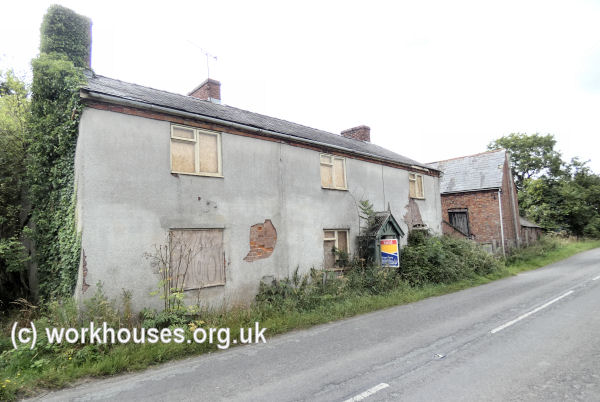
Former Worthen workhouse, master's house from the north, 2020.
© Peter Higginbotham.
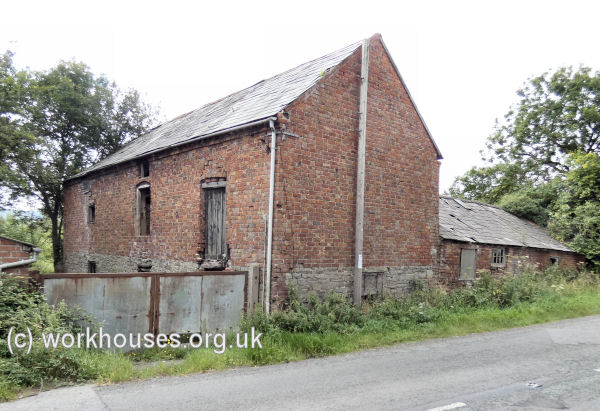
Former Worthen workhouse from the north, 2020.
© Peter Higginbotham.
Chirbury's workhouse, originally an almshouse, was at the west of the village, on the Montgomery Road (SO257984). In recent times, the property was known as Workhouse Cottages.
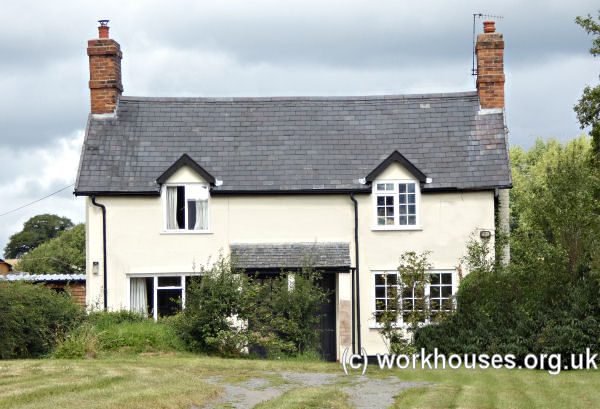
Former Chirbury workhouse.
© Peter Higginbotham.
In 1792, Montgomery and Pool, together with 14 other parishes and townships (Berriew, Llandyssil, Llanmerewig, Forden, Cletterwood, Hope, Leighton, Trelystan, Wolston Nyend [Trelystan], Aston, Castlewright, Worthin [Worthen], Chirbury and Churchstoke) were incorporated under a Local Act of Parliament (32 Geo.3. c.96. For the better Relief and Employment of the Poor, belonging to the Parishes of Montgomery and Pool, and certain other Parishes and Places therein mentioned in the Counties of Montgomery and Salop). The Incoporation was governed by a board of 21 directors who had powers to manage poor relief administration and to set up a workhouse or "House of Industry". A workhouse was built in 1795, on an elevated site about a mile to the south-west of Forden. Designed by Joseph Bromfield, it cost £12,000 and could accommodate up to 500 inmates.
In 1795, a schoolmaster was appointed at a salary of £10-10s-0d per annum, which presumably included board and lodging. In 1798 his salary was £14 per annum, but from the Board Minutes of 1804 it appears that this ill-paid functionary was allowed to earn an extra four guineas a year by cutting the children's hair, and shaving the poor inmates of the House.
Punishments for misbehaving inmates were severe, with the lash, scold's bridle, and stocks regularly being deployed as the following records show:
8th Feb. 1797 Elizabeth Jones to be flogged "the 1st Board Day after Mr Baxter reports her fit for the operation, for absenting the house without leave"
9th Aug. 1797 Clerk reports opinion of full meeting of Directors that the Porter from the repugnancy which he hath to the executing corporal punishments, tho in other respects a good servant should be permitted to employ J. Davies on Monty, or another proper person to do that part of his duty.
9th Aug. 1797 That the shoemaker's old room next the stairs be turned into a prison and that two cells of brick be built in the upper end thereof for close and solitary confinement.
19th Aug. 1801 Thomas Luke to be punished by whipping for robbing Mrs Edwards's orchard.
2nd Sep 1801 Elizth. Williams to be punished by a whipping for embezzling wearing apparel and other misconduct in the house.
2nd Dec. 1801 Maria Clayton having been detected in embezzling potatoes, ordered that she be punished by whipping.
12th May. 1802 Anne Davies to be placed in stocks with scolding bridle for 2 hours at dinner time to-morrow, and Mary Nicholas in stocks, same time for disorderly behaviour.
5th Oct. 1808 That a bridle for the punishment of scolds be purchased that lately in the house belonging to Montgomery Corporation being sent for back and returned.
4th Sept. 1811 That Joseph Heath, who deserted the house on 4th July last, be flogged on Wednesday next immediately before dinner, and to be put and kept in the stocks during dinner.
6th Nov. 1811 William Howells who deserted this house on 15th Nov. 1810, is ordered to be flogged this day week at dinner time.
21st Sept. 1814 John Jones having been guilty of great misconduct in prevarication relating to some money he has at interest with Mr Samuel Lea of Welbach, is ordered that he be confined in the crib till dinner time next Wednesday, and that then he be flogged unless he tells the truth.
After 1834
Because of its local Act status, the Montgomery and Pool Incorporation was exempt from most of the provisions of the 1834 Poor Law Amendment Act. It member parishes at this time were: Aston, Berriew, Brompton and Rhiston, Castlewright, Chirbury, Churchstoke, Cletterwood, Forden, Hope, Leighton, Llandysil, Llanmerewig, Montgomery, Lower Pool, Middle Pool, Upper Pool, Trelystan, and Worthin.
Although the Welsh town of Pool was renamed Welshpool in 1835, to avoid confusion with the English town of Poole, the Incorporation retained the original spelling. It continued in operation until 25th March, 1870, when it was replaced by the new Forden Poor Law Union. The new union's operation was overseen by an elected Board of Guardians, 34 in number, representing its 24 constituent parishes as listed below (figures in brackets indicate numbers of Guardians if more than one):
Aston, Berriew (3), Brompton and Rhiston, Castle Caereinion, Castlewright, Chirbury (2), Churchstoke (2), Cletterwood, Cyfronydd, Forden, Hope, Leighton, Llandysil, Llanmerewig, Middletown, Montgomery (2), Lower Pool (2), Middle Pool (3), Upper Pool, Rhosgoch, Trewern, Trelystan, Uppington, Worthin. The parishes ranged in size from Rhosgoch (population 48) to Worthin (3,150). Later additions to the Union included Allerbury, Buttington and Guilsfield.
The layout of the site is shown on the 1901 map below.
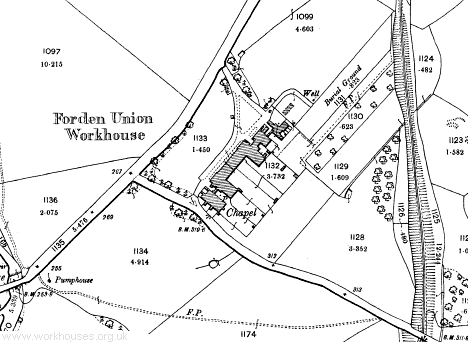
Forden workhouse site, 1901.
The main building was in the form of a U-shaped block facing to the north-west.
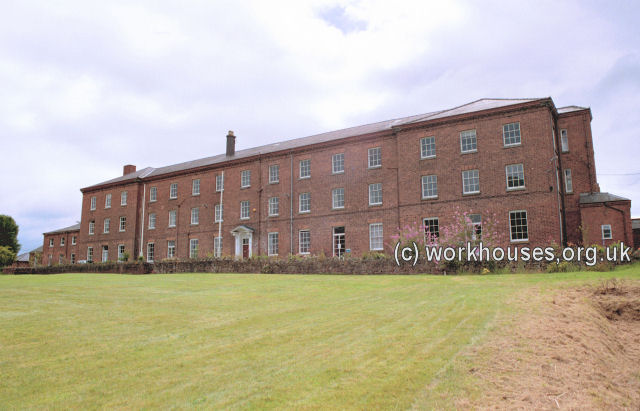
Forden general view from the north-west, 2000.
© Peter Higginbotham.
A small mortuary stood immediately to the north of the main building.
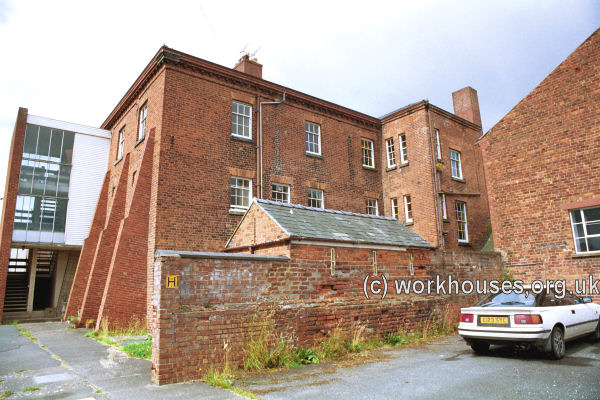
Forden north wing and mortuary, 2000.
© Peter Higginbotham.
Several outbuildings stood at the north of the site, one of which had its own partitioned yards at the rear.
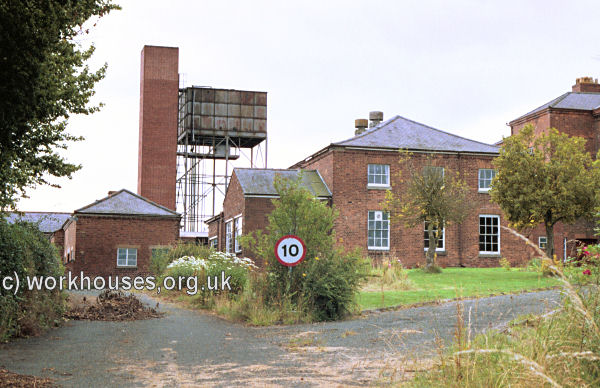
Forden workhouse from the north, 2000.
© Peter Higginbotham.
A chapel lay at the south of the workhouse.
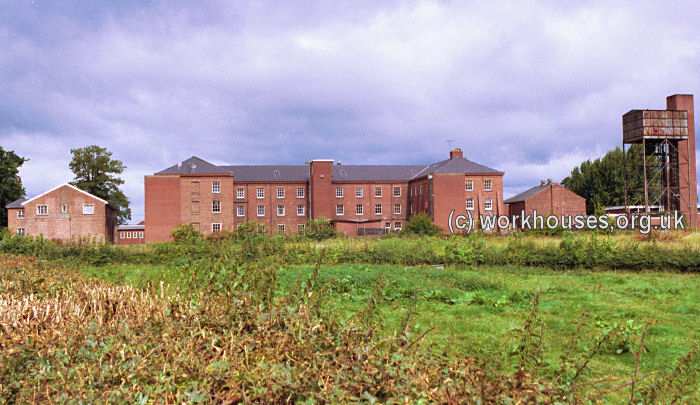
Forden rear view from the south-east, 2000.
© Peter Higginbotham.
The workhouse later became Brynhyfryd Hospital and provided care mainly for the elderly. In 2001, the building, renamed Camlad House, was being used as a meditation centre, but has now been converted to flats.
Staff
Inmates
Records
Note: many repositories impose a closure period of up to 100 years for records identifying individuals. Before travelling a long distance, always check that the records you want to consult will be available.
- Powys County Archives Office, Unit 29, Ddole Road Enterprise Park, Llandrindod, LD1 6DF. Holdings include: Minute books (1795-1824); Minute book of Special Committee of Guardians (1818-25); Officer's Reports book (records information on many aspects of the workhouse, 1795-98) [digitised]; Cash book, receipts and disbursements (1800-03); Workhouse Master's Day Book (daily inmate statistics 1835-54); Guardians' minute books (1870-1900, 1912-15, 1921-30); Ledgers (1886-1930); etc.
Bibliography
- Montgomeryshire Collections 32, 1902.
- NEW! Workhouses of Wales and the Welsh Borders. The story of the workhouse across the whole of Wales and the border counties of Cheshire, Gloucestershire, Herefordshire and Shropshire. More...
Links
- Powys Digital History Project
- Workhouse Officer's Reports book (contains comments on inmates, absentees and adsconding, expenditure and accounts, death and births, admissions, building work, officers and school.)
Unless otherwise indicated, this page () is copyright Peter Higginbotham. Contents may not be reproduced without permission.


